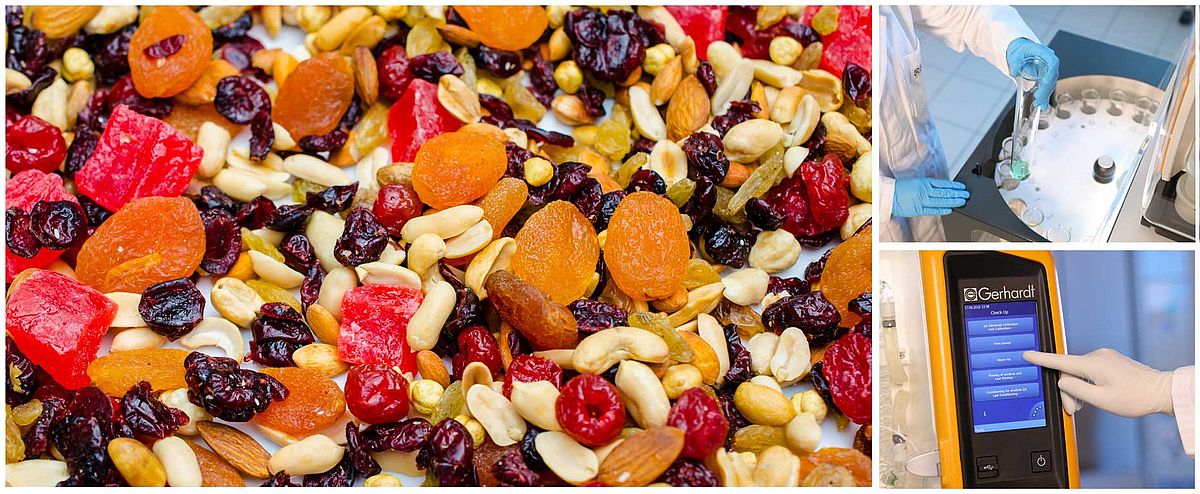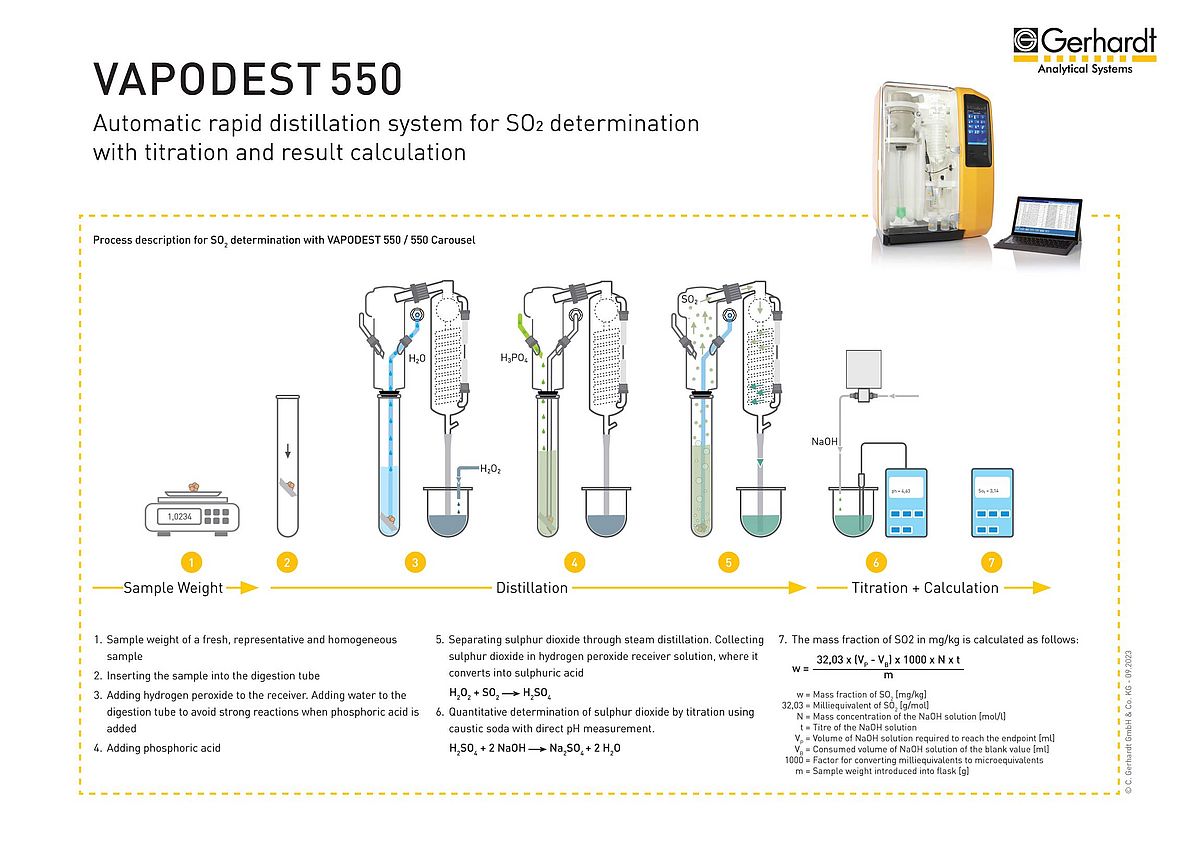Sulphur dioxide as an additive for food
Sulphur dioxide (SO2) and sulfites are often used as preservatives and antioxidants in the food industry due to their properties. Sulphur dioxide is particularly often used in dried fruits, fruit juices, jams, wine, potato based dishes and seafood. It inhibits the growth of fungal and bacterial cultures and thus extends the shelf life of food. In addition, sulphur dioxide slows down the oxidation process of food in contact with oxygen. This can significantly slow down the degradation of colourings, vitamins and flavours in food, so that it stays fresh for longer. In the case of dried fruits such as apricots, for example, the yellow colour is retained for longer, counteracting the brown colouring of the fruit.
However, due to the toxic effect of sulphur dioxide, its use in food is not entirely harmless. Although the consumption of small amounts is not a problem for most people, intolerance reactions such as headaches and nausea occur regularly. In the worst case, allergic reactions can even occur. For this reason, there are internationally applicable limit values for the use of sulphur dioxide. If certain concentrations are exceeded - in the EU and the USA at 10 mg/kg and 10 mg/l respectively - there is a labelling obligation. In packaged food, for example, sulphur dioxide and sulfites must be indicated as an additive with the numbers E220 - E228, in wine with the addition "contains sulfites" and in food sold loose with the indication "sulphurised".
Due to the toxicological effect, verification of compliance with the prescribed limits is necessary. At the same time, it must be checked whether the content is sufficient to utilise the full effect of SO2. With the VAPODEST 550 and 550 C and the application "Sulphur dioxide in food", the sulphur dioxide content in samples can be determined reliably and automatically.
Sulphur dioxide determination in food
Determination of blank value:
The distillation of sulphur dioxide is determined titrimetrically via a fixed pH endpoint. The fixed pH endpoint is based on the blank value of the chemicals. In the first step, this blank value is determined via a blank distillation of phosphoric acid and distilled water.
- App note: The template solution should be produced on a daily basis for high accuracy.
Sample preparation and planning:
Solid samples are first crushed and homogenised. A suitable sample quantity is decisive for the method. This should be based on the sulphur dioxide content of the sample. For this purpose, we have prepared a table to simplify the routine.
| SO2 content [mg/kg] or [mg/l] | Weighed-in quantity [g] or [ml] |
| ≤ 10 | ≥ 50 |
| 10 - 20 | 50 |
| 20 - 50 | 25 |
| 50 - 100 | 15 |
| 100 - 200 | 10 |
| 200 - 500 | 5 |
| 500 - 1500 | 2 |
| ≥ 1500 | 1 |
- App note: Especially for larger sample quantities or strongly foaming samples, the 800 ml tubes from C. Gerhardt are recommended.
Weighing and addition of phosphoric acid:
Solid samples are weighed into the digestion flask with weighing paper to the exactness of 0.1 mg and covered with 100 ml distilled water. For liquid samples, the corresponding volume is pipetted into the flask. Then the phosphoric acid is added and the distillation can be started.
- App note: There should be as little time as possible between the addition of the phosphoric acid and the clamping of the glass. The automatic addition of the phosphoric acid in the VAPODEST systems eliminates the risk of releasing the sulphur dioxide too early.
Distillation and titration:
During distillation, the sulphur dioxide is collected in the receiver solution and titrated to the fixed pH endpoint (usually between (4.4-4.5) using a sodium hydroxide solution (NaOH) in the final step.
- App note: For high precision, the NaOH used here should be as fresh as possible and the titre should be checked regularly.
Checking the recovery rate:
For control purposes, the recovery rate of a standard solution of sodium disulphite is checked. This should be at least 85 %.
- App note: The solution should always be produced fresh for high precision.
Analytical results for FAPAS control material with the VAPODEST
| Sample | Sample amount | Expected content [mg/kg] | Measured content [mg/kg] | z-Score | Recovery [%] | Standard deviation [%] |
|---|---|---|---|---|---|---|
| Sodium disuphite solution | 10 ml | 99.8 | 94.8 | - | 95.0 | 1.0 % |
| Meat | 5 g | 460 | 477 | 0.58 | - | 0.7 % |
| Dried apricrots | 2.5 g | 2119 | 2152 | 0.31 | - | 0.4 % |



![[Translate to English:] [Translate to English:]](/fileadmin/Redaktion/Freigestellte_Produktbilder/web_pic_VAP500C_2_450x450px.jpg)